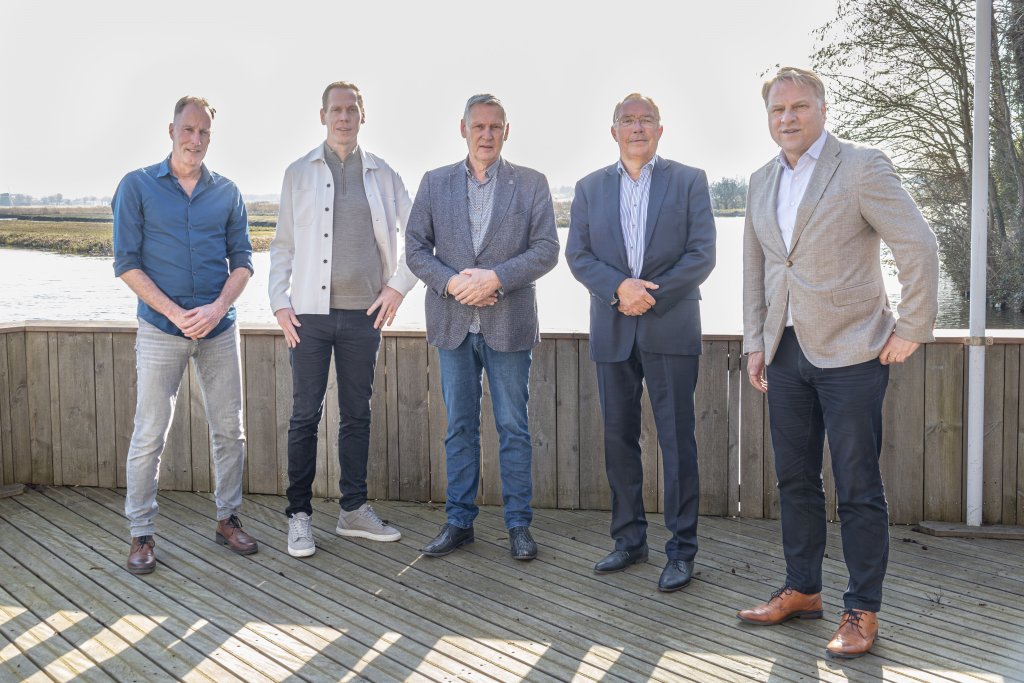Future Oosterdel area: balance between nature, water, culture and experience
On March 7, 2025, the cooperating parties proudly presented the plans needed to preserve the Oosterdel area toward the future and work toward the water quality goals. Gemeente Dijk en Waard, Hoogheemraadschap Hollands Noorderkwartier (HHNK), Staatsbosbeheer, Stichting Veldzorg Oosterdel and Museum BroekerVeiling worked for two years on a plan for this special island area. The municipality and HHNK are jointly paying for the implementation of measures in the area aimed at conservation and improving water quality.
The Plan Future-proof Oosterdel was created in recent years after research by a team of ecologists, landscape architects and engineers and with input from residents, island tenants and other stakeholders. The Oosterdel area is the last remaining part of thousands of horticultural fields, and now 251 fields in size. Unfortunately, nearly 30% of the banks have been damaged, slowly reducing the size of the islands.
Stopping bank erosion and improving water quality
More than 20 kilometers of banks are being restored in a way so that the erosion stops. To this end, different bank profiles have been designed. For example, zones have been defined with the main accent of culture and zones with the main accent of nature. Culture zones are parts of the area where bank profiles and sample islands are returned to "how it used to be and was used. These islands are located as much as possible along the tour boat route of Museum Broekerveiling.
Nature zones are parts of the area where bank profiles are designed to contribute as much as possible to water quality and nature. Hoogheemraad Jos Beemsterboer: "The water in and around the Oosterdel area has the potential to become clearer and contribute more to biodiversity. The measures required for this also contribute to the conservation of the Oosterdel area. That makes this a unique collaboration."
To improve water quality, in addition to restoring the banks, other measures are needed. Such as leaving more reeds on the banks and constructing so-called 'fish forests' with reed beds behind them. This creates better living conditions for natural enemies of crayfish, such as pike.
Experiencing cultural history, landscape and nature
'Cultural landscape, you have to work in it to keep it in culture' is a principle in the plan. Indispensable in the preservation of the area is Stichting Veldzorg Oosterdel, with the efforts of many volunteers. The leased fields and involvement of adopters and sponsors contributes just as much. Alderman Nils Langedijk emphasizes the importance of preserving this special area: "For the restoration of more than 20 kilometers of banks, in addition to measures, we need commitment from many people. In cooperation with professionals, tenants, residents and volunteers, we can preserve the Oosterdel area for the future. So that we can enjoy this gem for a long time to come."
Experiencing the cultural-historical landscape and nature can lead to even greater appreciation, involvement and therefore protection of the area. The sample islands contribute to this. There is also a desire to extend the nature walking path on the dike (Eerstelingenpad) on the north side through the Oosterdel area, thus making a tour around Oosterdel possible. Discussions with local residents will explore ways to make this possible.
The municipality and HHNK are jointly paying for the implementation of measures in the area aimed at restoring the banks and improving water quality. In order to use the available budget wisely, it has been determined that restoring the banks and the water quality measures will have a higher priority than building footpaths.
Background
On December 14, 2022, Municipality Dijk en Waard, Staatsbosbeheer, Stichting Veldzorg Oosterdel, Museum Broekerveiling and Hoogheemraadschap Hollands Noorderkwartier signed a cooperation agreement. In it, parties agreed to draw up a Plan Future-proof Oosterdel. The plan was developed in cooperation with the above-mentioned partners by landscape architects from Smartland, ecologists from OAK and engineers from Movares. Residents, tenants of islands and other interested parties contributed to the plan during a think-aloud evening (2023) and a walk-in evening (2024).
